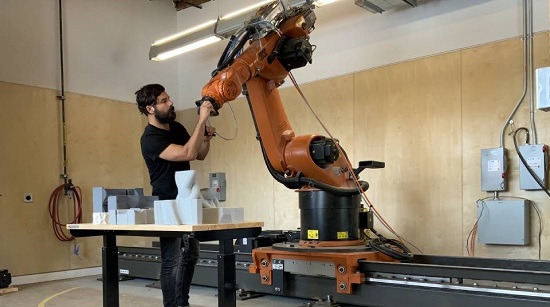 Monday, May 20, 2024
Monday, May 20, 2024  Monday, May 20, 2024
Monday, May 20, 2024 
For years, 3D printers were inaccessible to the average person – heavy, expensive and complicated to operate. Their use was reserved for those working in industrial applications.
Then in 2009, when patents on the printing process expired, developers adapted the technology to be available to consumers.
Today, for a little more than $300, anyone can purchase a desktop 3D printer and be producing high-quality models, building components, and more, in just a few hours.
That’s the kind of the equalizing impact Dr. Steven Beites’ cable-directed parallel robot (CDPR) could have on Northern Ontario construction practices. It’s currently being developed as part of a new research initiative through Laurentian University.
As part of a new research initiative through Laurentian, the two-year endeavour, set to officially get underway in September, taps into the expertise of researchers from multiple disciplines.
Working with Beites are Marc Arsenault, an associate professor from the science, engineering and architecture department at the Bharti School of Engineering; Blake Dotta, a Laurentian sessional instructor with a specialty in behavioural neuroscience; and Reza Foruzanmehr, a civil engineer, who joins the team from the University of Ottawa.
On July 6, the team received $250,000 for the project from the New Frontiers in Research Fund, an initiative of the Canada Research Coordinating Committee.
A CDPR is a computer-controlled robot that uses a system of cables and pulleys to perform a specific function, like a brick wall, based on a pre-determined blueprint.
Probably the best known example of a CDPR is the National Football League’s SkyCam: suspended above a playing field, it travels where traditional cameras can’t film on-field action during football games.
Beites’ team wants to build a CDPR that could be used to construct large-scale projects – everything from small objects to furniture to structures to housing.
The team believes this automated fabrication and assembly technology could be employed to address the housing issues in remote northern communities where building and labour costs are expensive.
Keep reading in Northern Ontario Business